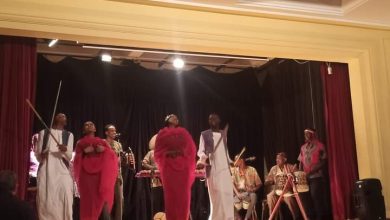Sudanese Literature: Encyclopedia, Science, Research Reviews

Sudan Events
Sudanese literature comprises both oral and written works of fiction and non-fiction created within the cultural history of the Republic of Sudan today.
This includes the territory of Sudan, once a British colony of Egypt, its history as an independent country since 1956, and its changing geographic extent in the 21st century.
Although there are records of the historical societies of the region called Sudan, such as the Kingdom of Kush in Nubia, little is known about the language, oral and written literature of the people who predecessor to today’s Sudan.
Moreover, the concept of Bilad al-Sudan, from which the modern name of the country derives, referred to a wider geographic region south of the Sahara, extending from western to eastern Central Africa.
As in many African countries, oral traditions of various ethnic and social groups have existed since time immemorial, but modern written literature in Sudan can only be traced back to the early 20th century.
With the publication of literature written in Sudanese newspapers and books, and the support of non-religious formal education, modern Sudanese literature, consisting of fiction and non-fiction, began to emerge. Going back to ancient oral tradition, poetry and song lyrics were the most popular literary genres in Sudan. Like other cultural expressions, the literature reflects Sudan’s hybrid identity, referred to by some scholars as Afro-Arabism.
In the 21st century, electronic media often rely on written texts and video-based oral narratives to connect the Sudanese people with their compatriots within the country and with the global Sudanese diaspora.
Some modern writers with Sudanese roots living in other countries, such as Leila Abrella and Jamal Mahjoub, write in English. Together with translations of the originals written in Arabic, we have made fictional literature about Sudan accessible to readers around the world.
The earliest surviving record of a unique Sudanese literary pioneer dates to about 300 BC and is written in the Meloi script. These historical records, such as sandstone inscriptions, give testimony to the kings of Kush and the gods of the Kushite culture of northern Sudan.
During the Christianization of Nubia in the 6th century AD, Cushitic and cursive were replaced by Byzantine Greek, Coptic and Old Nubian, creating documents related to both religion, public affairs and private life. From the 14th century onwards, Arabic gradually became the primary language of Nubia and, with the spread of Islam, developed into the primary written and spoken language of religious and secular matters in most other parts of Sudan.
The northern Nilotic oral poetic tradition Sudan was expressed mainly in colloquial Sudanese Arabic. Poetry, expressed orally or in song, is a highly developed and structured form that was and still is a fundamental form of literary expression.
Most of the surviving poems from the 19th century onwards praise the Prophet, and during the Mahdist period, the Mahdi. A rare historical record written in the early 19th century by Shaikh Ahmad ibn al-Hajj Abi Ali (b).1784-5) and other early Sudanese historians is the Funji Chronicle. Preserved in several versions in many manuscripts, it shows the history of the Hungj Sultanate (1504-1821) and its capital at Sennar on the Blue Nile, and the Turkic-Egyptian regime that succeeded it.
increase. These manuscripts were compiled as an annotated translation in 1999 by British historian Peter M. Holt under the title “Sudan of the Three Nile”.



